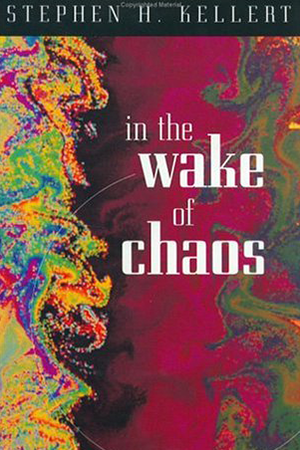
Library
Complexity Theory
David C. Krakauer
An Introduction to the Foundations of Complexity Science.
The Complex World, originally published in Volume 1 of Foundational Papers in Complexity Science, presents an entirely new framing of nature, of the human role in the natural and technological worlds, and what it means to prosper on a living planet. We live in a complex world—meaning one that is increasingly connected, evolving, technological, volatile, and potentially poised for catastrophe. And yet we continue to treat the world as if it were simple: linear, unchanging, disconnected, and infinitely exploitable. Complexity science is an approach to understanding and surviving in a complex world. In this concise and comprehensive introduction, Santa Fe Institute President David C. Krakauer traces the roots of complexity science back to the nineteenth-century science of machines—evolved and engineered—into the twentieth-century science of emergent systems. By combining insights from evolution, computation, nonlinear dynamics, and statistical physics, complexity science provides the first scientific framework for understanding the purposeful universe.
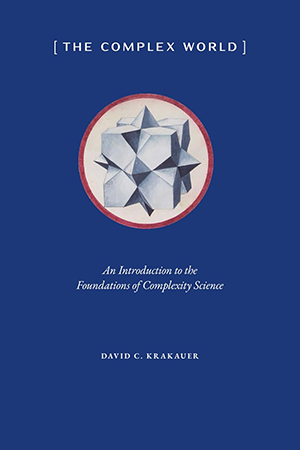
David C. Krakauer
Foundational Papers in Complexity Science: Volume 1
n four volumes, Foundational Papers in Complexity Science maps the development of complex-systems science through eighty-eight revolutionary works published across the twentieth century. Volume I spans the turbulent years from 1922 to 1962. Across several decades of war, runaway technological invention, and economic upheaval, complexity science emerges through the integration of ideas from evolution, computation, dynamics, and statistical physics. Included in this volume are essential papers by Léo Szilárd, Claude Shannon, Marvin Minsky, and Alan Turing. Each paper is introduced, and placed into its historical context, with enduring insights discussed by leading contemporary complexity scientists. Foundational Papers presents the first unified chart of the full territory of complexity science—an essential resource for navigating the modern world.
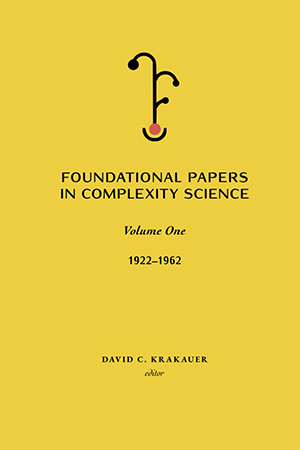
David C. Krakauer
Foundational Papers in Complexity Science: Volume 2
In four volumes, Foundational Papers in Complexity Science maps the development of complex-systems science through eighty-eight revolutionary works published across the twentieth century. Volume II spans the utopian–dystopian years from 1962 to 1973, a decade of global instability, social revolution, space exploration, and growing ecological awareness. Complexity science challenges our understanding of prediction, control, and uncertainty. Included in this volume are essential papers by John von Neumann, Philip Anderson, Herbert Simon, and Thomas Schelling. Each paper is introduced, and placed into its historical context, with enduring insights discussed by leading contemporary complexity scientists.
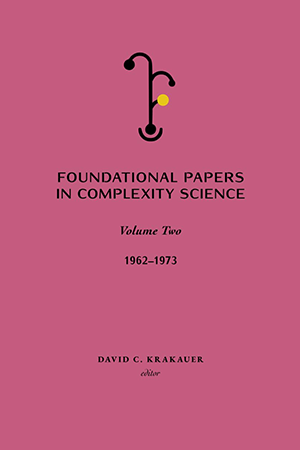
George Cowan
Complexity (Metaphors, Models, and Reality)
The terms complexity, complex adaptive systems, and sciences of complexity are found often in recent scientific literature, reflecting the remarkable growth in collaborative academic research focused on complexity from the origin and dynamics of organisms to the largest social and political organizations. One of the great challenges in this field of research is to discover which features are essential and shared by all of the seemingly disparate systems that are described as complex. Is there sufficient synthesis to suggest the possibility of an overarching science of complexity? This report describes current views on this subject held by various eminent scholars associated with the Santa Fe Institute.The physical sciences have traditionally been concerned with simple systems whose dynamics can be described in mathematical terms with precision and certainty. In contrast, the biological and social sciences are inevitably concerned with self-organized or social complex” systems whose detailed behaviors appear to be unpredictable. The two categories differ greatly in size and diversity, prompting the late mathematician Stanislaus Ulam to remark that research on complex systems might be compared to the study of non-elephants. Nevertheless, certain integrative themes have begun to emerge.Rising activity in this field of research runs completely counter to the trend toward increasing fragmentation and specialization in the sciences. It has stimulated a resurgence of interest in a broad synthesis involving mathematics, computational science, physics, chemistry, biology, neuroscience, and the social sciences. The growth of effort in this very extended field has been greatly stimulated by the development of new computational tools that are capable of dealing with vast, interrelated databases. Many of the participants in complexity research feel that it is now time to reintegrate the fragmented interests of much of the academic community. The reader is encouraged to consider whether such views are sparking a historic renaissance of scholarship or represent a passing scientific diversion.
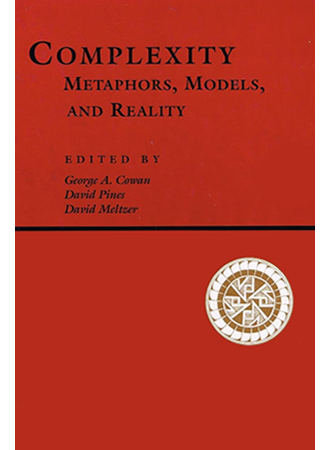
Stuart A. Kauffman
Complexity, Entropy, and the Physics of Information: Volume I
The specter of information is haunting sciences. With these words, Wojciech H. Zurek invited fellow scientists to attend the 1989 Santa Fe Institute workshop on which this proceedings volume is based. Thermodynamics, statistical mechanics, the quantum theory of measurement, the physics of computation, dynamical systems, molecular biology, and computer science—information remains central to the 32 essays collected in this new edition of Complexity, Entropy & the Physics of Information. Like the original meeting, this two-volume set explores the connections between quantum and classical physics, information and its transfer, and computation—and their significance for the formulation of physical theories. A newly written preface from attendee Seth Lloyd contextualizes the significance of this record of a meeting that marked the intersection of information, physics, complexity, and computation.
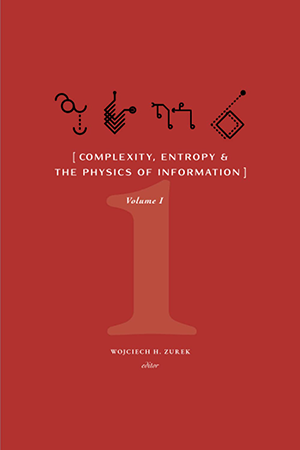
Wojciech H. Zurek
Complexity, Entropy, and the Physics of Information: Volume II
Part of the SFI Press’s Archive series, making affordable editions of past Santa Fe Institute publications globally available, Complexity, Entropy, and the Physics of Information emerged from a 1989 SFI meeting of the same name organized by editor Wojciech H. Zurek. This two-volume reprint not only explores the connections between quantum and classical physics, information and its transfer, computation, and their significance for the formulation of physical theories, but also considers the origins and evolution of information-processing entitles, their complexity, and the manner in which they analyzed their perceptions to form models of the universe. Information, physics, complexity, quantum, and computation all meet in these 16 essays from contributors such as Murray Gell-Mann, James B. Hartle, Tommaso Toffoli, and L. A. Khalfin.
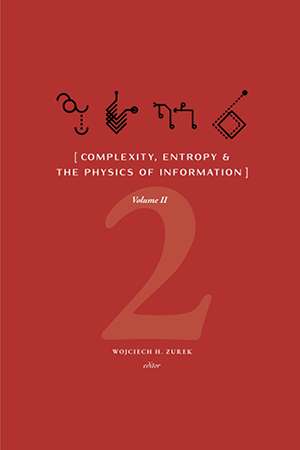
Giorgio Parisi
In a Flight of Starlings: The Wonder of Complex Systems
The world is shaped by complexity. In this enlightening book, Nobel Prize winner Giorgio Parisi guides us through his unorthodox yet exhilarating work to show us how. It all starts with investigating the principles of physics by observing the sophisticated flight patterns of starlings. Studying the movements of these birds, he has realized, proves an illuminating way into understanding complex systems of all kinds - collections of everything from atoms to planets to other animals like ourselves.Along the way, Parisi reflects on the lessons he's taken from a life in pursuit of scientific truth: the importance of serendipity to the discovery of new ideas, the surprising kinship between physics and other fields of study and the value of science to a thriving society. In so doing, he removes the practice of science from the confines of the laboratory and into the real world. Complexity is all around us - from climate to finance to biology, it offers a unique way of finding order in chaos. Part elegant scientific treatise, part thrilling intellectual journey, In a Flight of Starlings is an invitation to find wonder in the world around us.
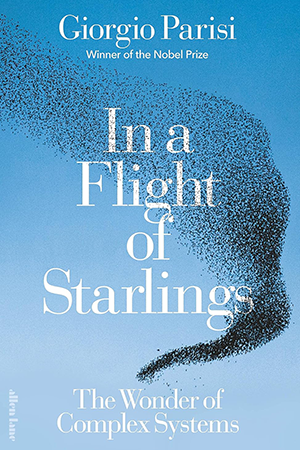
Neil Theise
Notes on Complexity: Life, Consciousness, and Meaning
An electrifying introduction to complexity theory, the science of how complex systems behave, that explains the interconnectedness of all things and that Deepak Chopra says, "will change the way you understand yourself and the universe."Nothing in the universe is more complex than life. Throughout the skies, in oceans, and across lands, life is endlessly on the move. In its myriad forms, from cells to human beings, social structures, and ecosystems--life is open-ended, evolving, unpredictable, yet adaptive and self-sustaining. Complexity theory addresses the mysteries that animate science, philosophy, and metaphysics: how this teeming array of existence, from the infinitesimal to the infinite, is in fact a seamless living whole and what our place, as conscious beings, is within it. Physician, scientist, and philosopher Neil Theise makes accessible this "theory of being," one of the pillars of modern science, and its holistic view of human existence. He notes the surprising underlying connections within a universe that is itself one vast complex system--between ant colonies and the growth of forests, cancer and economic bubbles, murmurations of starlings and crowds walking down the street.The implications of complexity theory are profound, providing insight into everything from the permeable boundaries of our bodies to the nature of consciousness. Notes on Complexity is an invitation to trade our limited, individualistic view for the expansive perspective of a universe that is dynamic, cohesive, and alive--a whole greater than the sum of its parts. Theise takes us to the exhilarating frontiers of human knowledge and in the process restores wonder and meaning to our experience of the everyday.
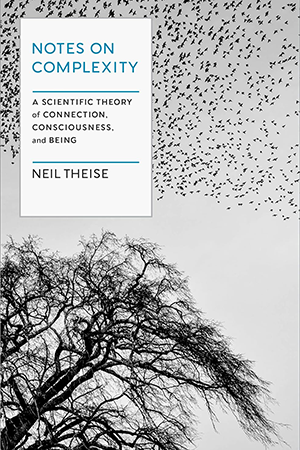
Albert-Laszlo Barabasi
Linked: How Everything Is Connected to Everything Else
The best-selling guide to network science, the revolutionary field that reveals the deep links between all forms of human social life. A cocktail party. A terrorist cell. Ancient bacteria. An international conglomerate. All are networks, and all are a part of a surprising scientific revolution. In Linked, Albert-LàlÃ3rabà, the nation's foremost expert in the new science of networks, takes us on an intellectual adventure to prove that social networks, corporations, and living organisms are more similar than previously thought. Barabà shows that grasping a full understanding of network science will someday allow us to design blue-chip businesses, stop the outbreak of deadly diseases, and influence the exchange of ideas and information. Just as James Gleick and the Erdos-RÃ(c)i model brought the discovery of chaos theory to the general public, Linked tells the story of the true science of the future and of experiments in statistical mechanics on the internet, all vital parts of what would eventually be called the Barabà-Albert model.
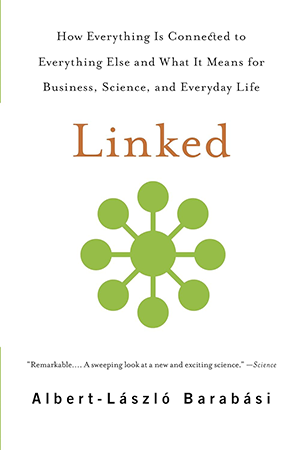
James Gleick
Chaos
For centuries, scientific thought was focused on bringing order to the natural world. But even as relativity and quantum mechanics undermined that rigid certainty in the first half of the twentieth century, the scientific community clung to the idea that any system, no matter how complex, could be reduced to a simple pattern. In the 1960s, a small group of radical thinkers began to take that notion apart, placing new importance on the tiny experimental irregularities that scientists had long learned to ignore. Miniscule differences in data, they said, would eventually produce massive ones—and complex systems like the weather, economics, and human behavior suddenly became clearer and more beautiful than they had ever been before.
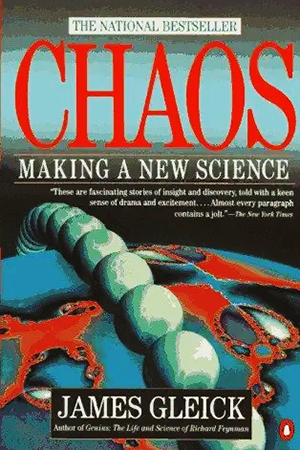
John H. Miller
Ex Machina: Coevolving Machines and the Origins of the Social Universe
If we could rewind the tape of the Earth’s deep history back to the beginning and start the world anew—would social behavior arise yet again? While the study of origins is foundational to many scientific fields, such as physics and biology, it has rarely been pursued in the social sciences. Yet knowledge of something’s origins often gives us new insights into the present. In Ex Machina, John H. Miller introduces a methodology for exploring systems of adaptive, interacting, choice-making agents, and uses this approach to identify conditions sufficient for the emergence of social behavior. Miller combines ideas from biology, computation, game theory, and the social sciences to evolve a set of interacting automata from asocial to social behavior. Readers will learn what it takes for an adaptive system of simple agents to become social—and what it means for a system to be social in the first place.
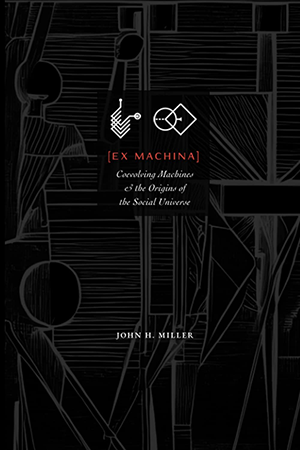
Michael A. Livermore
Law as Data
In recent years, the digitization of legal texts and developments in the fields of statistics, computer science, and data analytics have opened entirely new approaches to the study of law. This volume explores the new field of computational legal analysis, an approach marked by its use of legal texts as data. The emphasis herein is work that pushes methodological boundaries, either by using new tools to study longstanding questions within legal studies or by identifying new questions in response to developments in data availability and analysis. By using the text and underlying data of legal documents as the direct objects of quantitative statistical analysis, Law as Data introduces the legal world to the broad range of computational tools already proving themselves relevant to law scholarship and practice, and highlights the early steps in what promises to be an exciting new approach to studying the law.
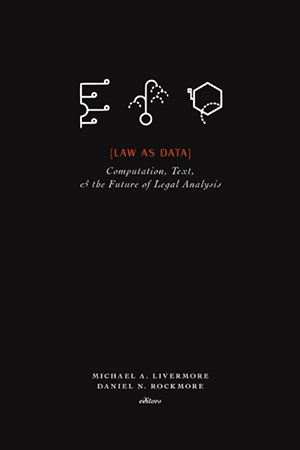
David Pines
Emerging Syntheses In Science
Evolution of self-replicating macromolecules through natural selection is a dynamically ordered process. Two concepts are introduced to describe the physical regularity of macromolecular evolution: sequence space and quasi-species. Natural selection means localization of a mutant distribution in sequence space. This localized distribution, called the quasi-species, is centered around a master sequence (or a degenerate set), that the biologist would call the wild-type. The self-ordering of such a system is an essential consequence of its formation through self-reproduction of its macromolecular consti tuents, a process that in the dynamical equations expresses itself by positive diagonal coefficients called selective values. The theory describes how population numbers of wild type and mutants are related to the distribution of selective values, that is to say, how value topography maps into population topography. For selectively (nearly) neutral mutants appearing in the quasi- species distribution, population numbers are greatly enhanced as compared to those of disadvantageous mutants, even more so in continuous domains of such selectively valuable mutants. As a consequence, mutants far distant from the wild type may occur because they are produced with the help of highly populated, less distant precursors. Since values are cohesively distributed, like mountains on earth, and since their positions are multiply connected in the high-dimensional sequence space, the overpopulation of (nearly) neural mutants provides guidance for the evolutionary process. Localization in sequence space, subject to a threshold in the fidelity of reproduction, is steadily challenged until an optimal state is reached. The model has been designed according to experimentally determined properties of self-replicating molecules. The conclusions reached from the theoretical models can be used to construct machines that provide optimal conditions for the evolution of functional macromolecules.
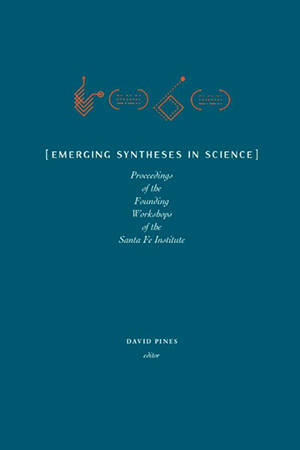
Jeremy A. Sabloff
The Emergence of Premodern States
Like many other sciences, archaeology is experiencing a data deluge. The recent accumulation of accessible data on early urban societies, coupled with the re-emergence of comparative studies, puts modern scholars in a position to make significant theoretical advances concerning the key episode of human social organization that provided the foundations of the contemporary world: the formation of the state. A complex systems approach—pioneered at the Santa Fe Institute—involves fully interdisciplinary explorations of long-debated questions. Can basic quantitative analysis of human social evolution reveal macrocultural processes? Can we understand social cohesion by way of cultural genotypes? And does the emergence of social complexity involve the creation of new potential or the realization of latent human capabilities? In this volume, many of the foremost experts in quantitative archaeology and anthropology leverage innovative methodologies—including agent-based modeling, network analysis, and theoretical applications of evolutionary biology—to push the field in new directions.
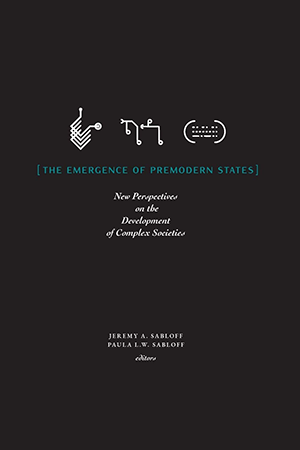
Iwona Abrams
Introducing Chaos
If a butterfly flaps its wings in Brazil, does it cause a tornado in Texas? Chaos theory attempts to answer such baffling questions. The discovery of randomness in apparently predictable physical systems has evolved into a science that declares the universe to be far more unpredictable than we have ever imagined. Introducing Chaos explains how chaos makes its presence felt in events from the fluctuation of animal populations to the ups and downs of the stock market. It also examines the roots of chaos in modern maths and physics, and explores the relationship between chaos and complexity, the unifying theory which suggests that all complex systems evolve from a few simple rules. This is an accessible introduction to an astonishing and controversial theory.
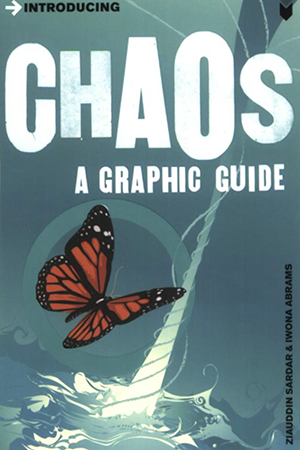
David C. Krakauer
InterPlanetary Transmissions - 1st edition
This volume is a record of the proceedings of the first InterPlanetary Festival, held in Santa Fe, New Mexico, in June of 2018 by the Santa Fe Institute, birthplace of complexity science. An annual free public event, the InterPlanetary Festival combines an exploration of complexity science and technological innovation with a summer festival full of music, film, art, food, drinks, and more. The Festival is just one aspect of the broader InterPlanetary Project, which is equal parts conference, festival, and research program. The first project of its kind to combine celebration with experimentation, and conversation with analysis, the InterPlanetary Project seeks to be nothing less than a whole-planet project—beyond borders, beyond politics, beyond economics—to activate the collective intelligence of our first planet: Earth.
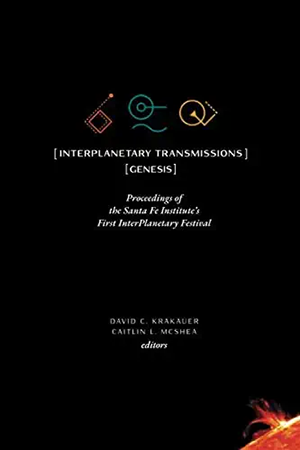
David C. Krakauer
InterPlanetary Transmissions - 2nd edition
This volume is a record of the Santa Fe Institute’s second InterPlanetary Festival, nicknamed Stardust, held in Santa Fe, New Mexico, in June of 2019. The InterPlanetary Festival fuses an exploration of complex systems and technological innovation with music, film, art, food, drinks, and more. During the Summer of Stardust, as the world observed the fiftieth anniversary of the momentous Apollo 11 Moon landing, the Festival celebrated human ingenuity and pondered what the next half-century might hold. Conversations centered on building other worlds — imaginatively in literature, experimentally in simulation and games, and literally in architectural design. Attendees and panelists wrestled with topics as wide-ranging as time, the future of cities, and the meaning of intelligence. In this book, transcripts of the Festival panel discussions, each paired with new introductions by contributors including physicist Sean Carroll, poet, artist, and curator Anaïs Duplan, and speculative-fiction writer Rebecca Roanhorse, commemorate the creativity and insight generated at this one-of-a-kind cosmic event.
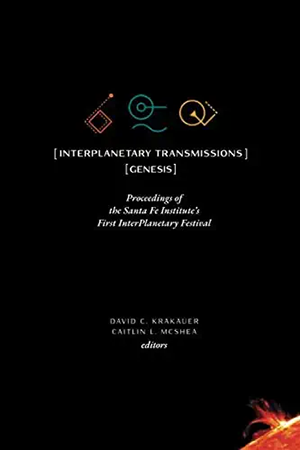
Iza Romanowska
Agent-Based Modeling for Archaeology
To fully understand not only the past, but also the trajectories, of human societies, we need a more dynamic view of human social systems. Agent-based modeling (ABM), which can create fine-scale models of behavior over time and space, may reveal important, general patterns of human activity. Agent-Based Modeling for Archaeology is the first ABM textbook designed for researchers studying the human past. Appropriate for scholars from archaeology, the digital humanities, and other social sciences, this book offers novices and more experienced ABM researchers a modular approach to learning ABM and using it effectively. Readers will find the necessary background, discussion of modeling techniques and traps, references, and algorithms to use ABM in their own work. They will also find engaging examples of how other scholars have applied ABM, ranging from the study of the intercontinental migration pathways of early hominins, to the weather–crop–population cycles of the American Southwest, to the trade networks of Ancient Rome. This textbook provides the foundations needed to simulate the complexity of past human societies, offering researchers a richer understanding of the past—and likely future—of our species.
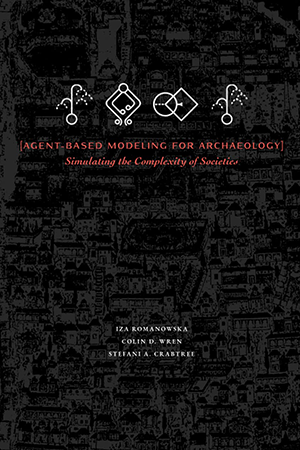
Steven F. Railsback
Agent-Based and Individual-Based Modeling
The essential textbook on agent-based modeling—now fully updated and expanded Agent-Based and Individual-Based Modeling has become the standard textbook on the subject for classroom use and self-instruction. Drawing on the latest version of NetLogo and fully updated with new examples, exercises, and an enhanced text for easier comprehension, this is the essential resource for anyone seeking to understand how the dynamics of biological, social, and other complex systems arise from the characteristics of the agents that make up these systems. Steven Railsback and Volker Grimm lead students stepwise through the processes of designing, programming, documenting, and doing scientific research with agent-based models, focusing on the adaptive behaviors that make these models necessary. They cover the fundamentals of modeling and model analysis, introduce key modeling concepts, and demonstrate how to implement them using NetLogo. They also address pattern-oriented modeling, an invaluable strategy for modeling real-world problems and developing theory. This accessible and authoritative book focuses on modeling as a tool for understanding real complex systems. It explains how to pose a specific question, use observations from actual systems to design models, write and software, and more. A hands-on introduction that guides students from conceptual design to computer implementation to analysis.
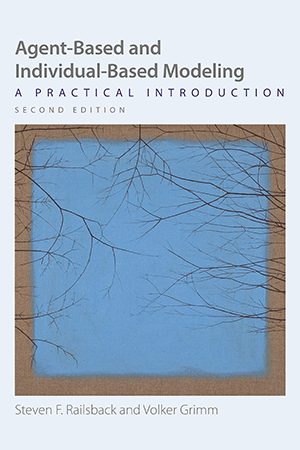
John H. Holland
Signals and Boundaries
An overarching framework for comparing and steering complex adaptive systems is developed through understanding the mechanisms that generate their intricate signal/boundary hierarchies. Complex adaptive systems (cas), including ecosystems, governments, biological cells, and markets, are characterized by intricate hierarchical arrangements of boundaries and signals. In ecosystems, for example, niches act as semi-permeable boundaries, and smells and visual patterns serve as signals; governments have departmental hierarchies with memoranda acting as signals; and so it is with other cas. Despite a wealth of data and descriptions concerning different cas, there remain many unanswered questions about "steering" these systems. In Signals and Boundaries, John Holland argues that understanding the origin of the intricate signal/border hierarchies of these systems is the key to answering such questions. He develops an overarching framework for comparing and steering cas through the mechanisms that generate their signal/boundary hierarchies. Holland lays out a path for developing the framework that emphasizes agents, niches, theory, and mathematical models. He discusses, among other topics, theory construction; signal-processing agents; networks as representations of signal/boundary interaction; adaptation; recombination and reproduction; the use of tagged urn models (adapted from elementary probability theory) to represent boundary hierarchies; finitely generated systems as a way to tie the models examined into a single framework; the framework itself, illustrated by a simple finitely generated version of the development of a multi-celled organism; and Markov processes.
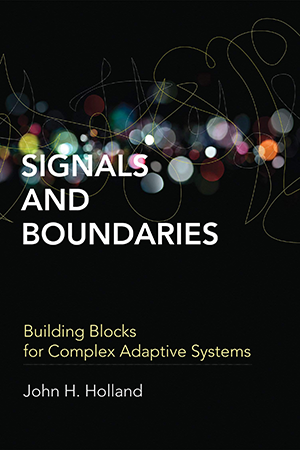
Robert F. Port
Mind as Motion
Mind as Motion is the first comprehensive presentation of the dynamical approach to cognition. It contains a representative sampling of original, current research on topics such as perception, motor control, speech and language, decision making, and development. Included are chapters by pioneers of the approach, as well as others applying the tools of dynamics to a wide range of new problems. Throughout, particular attention is paid to the philosophical foundations of this radical new research program. Cognitive science has traditionally been dominated by an AI-based computational paradigm in which cognition is taken to be the manipulation of internal symbols. Even as the potential of this paradigm continues to be explored, limitations are becoming increasingly apparent. Researchers throughout cognitive science have been casting around for alternative theoretical frameworks. Out of this flux has emerged the dynamical concept, according to which cognitive processes are the behavior of nonlinear dynamical systems and are best studied using the mathematics of dynamical modeling and dynamical systems theory. Mind as Motion provides a conceptual and historical overview of the dynamical approach, a tutorial introduction to dynamics for cognitive scientists, and a glossary covering the most frequently used terms. Each chapter includes an introduction by the editors, outlining its main ideas and placing it in context, and a guide to further reading. Contributors: Randall Beer, Geoffrey Bingham, Catherine Browman, Jerome Busemeyer, Claudia Carello, Fred Cummins, Jeffrey Elman, Marco Giunti, Louis Goldstein, Stephen Grossberg, Devin McAuley, Mary Ann Metzger, Alec Norton, Jean Petitot, Robert Port, Dana Redington, Steven Reidbord, Elliot Saltzman, Esther Thelen, James Townsend, Michael Turvey, Paul van Geert, Timothy van Gelder. A Bradford Book
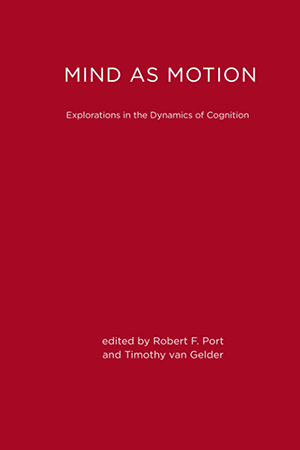
Uri Wilensky
An Introduction to Agent-Based Modeling
A comprehensive and hands-on introduction to the core concepts, methods, and applications of agent-based modeling, including detailed NetLogo examples. The advent of widespread fast computing has enabled us to work on more complex problems and to build and analyze more complex models. This book provides an introduction to one of the primary methodologies for research in this new field of knowledge. Agent-based modeling (ABM) offers a new way of doing science: by conducting computer-based experiments. ABM is applicable to complex systems embedded in natural, social, and engineered contexts, across domains that range from engineering to ecology. An Introduction to Agent-Based Modeling offers a comprehensive description of the core concepts, methods, and applications of ABM. Its hands-on approach—with hundreds of examples and exercises using NetLogo—enables readers to begin constructing models immediately, regardless of experience or discipline. The book first describes the nature and rationale of agent-based modeling, then presents the methodology for designing and building ABMs, and finally discusses how to utilize ABMs to answer complex questions. Features in each chapter include step-by-step guides to developing models in the main text; text boxes with additional information and concepts; end-of-chapter explorations; and references and lists of relevant reading. There is also an accompanying website with all the models and code.
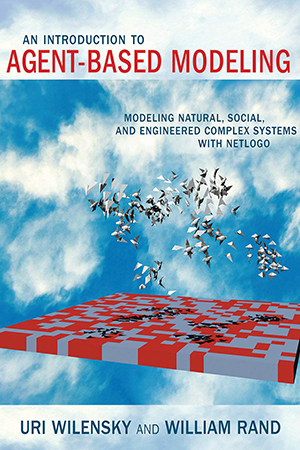
Yaneer Bar-yam
Dynamics Of Complex Systems
This book aims to develop models and modeling techniques that are useful when applied to all complex systems. It adopts both analytic tools and computer simulation. The book is intended for students and researchers with a variety of backgrounds.The study of complex systems in a unified framework has become recognized in recent years as a new scientific discipline, the ultimate of interdisciplinary fields. Breaking down the barriers between physics, chemistry and biology and the so-called soft sciences of psychology, sociology, economics, and anthropology, this text explores the universal physical and mathematical principles that govern the emergence of complex systems from simple components. Dynamics of Complex Systems is the first text describing the modern unified study of complex systems. It is designed for upper-undergraduate/beginning graduate-level students, and covers a wide range of applications in a wide array of disciplines. A central goal of this text is to develop models and modeling techniques that are useful when applied to all complex systems. This is done by adopting both analytic tools, from statistical mechanics to stochastic dynamics, and computer simulation techniques, such as cellular automata and Monte Carlo. In four sets of paired, self-contained chapters, Yaneer Bar-Yam discusses complex systems in the context of neural networks, protein folding, living organisms, and finally, human civilization itself. He explores fundamental questions about the structure, dynamics, evolution, development and quantitative complexity that apply to all complex systems. In the first chapter, mathematical foundations such as iterative maps and chaos, probability theory and random walks, thermodynamics, information and computation theory, fractals and scaling, are reviewed to enable the text to be read by students and researchers with a variety of backgrounds.
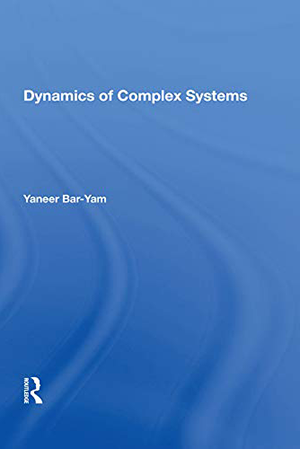
David Pines
Emerging syntheses in science
Santa Fe, October 1984. Many of the most accomplished creative minds in science—including four Nobel laureates—gather to create an institution unlike any other: where unconventional thinking flourishes and disciplinary boundaries fall away. From this meeting emerged some of the most generative research programs of the last three decades, including the physics of living systems, the mathematics of society, quantitative archaeology, the nature of mind, fundamentals of complex systems theory—and the implications of all of these on the future. The original vision of a boundary-spanning research center became what Nature has called “that mecca of multidisciplinary complexity studies,” the Santa Fe Institute. With a new introduction by David Krakauer and Geoffrey West and an afterword by Stephen Wolfram, as well as never-before-published transcripts of the discussion sessions, this volume of seminal essays lays the foundation for thirty years of complexity science—and outlines challenges for thirty more.
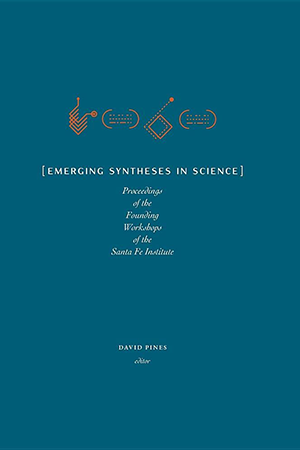
Donella Meadows
Thinking in Systems
In the years following her role as the lead author of the international bestseller, Limits to Growth—the first book to show the consequences of unchecked growth on a finite planet— Donella Meadows remained a pioneer of environmental and social analysis until her untimely death in 2001. Thinking in Systems, is a concise and crucial book offering insight for problem solving on scales ranging from the personal to the global. Edited by the Sustainability Institutes Diana Wright, this essential primer brings systems thinking out of the realm of computers and equations and into the tangible world, showing readers how to develop the systems-thinking skills that thought leaders across the globe consider critical for 21st-century life. Some of the biggest problems facing the world—war, hunger, poverty, and environmental degradation—are essentially system failures. They cannot be solved by fixing one piece in isolation from the others, because even seemingly minor details have enormous power to undermine the best efforts of too-narrow thinking. While readers will learn the conceptual tools and methods of systems thinking, the heart of the book is grander than methodology. Donella Meadows was known as much for nurturing positive outcomes as she was for delving into the science behind global dilemmas. She reminds readers to pay attention to what is important, not just what is quantifiable, to stay humble, and to stay a learner. In a world growing ever more complicated, crowded, and interdependent, Thinking in Systems helps readers avoid confusion and helplessness, the first step toward finding proactive and effective solutions.
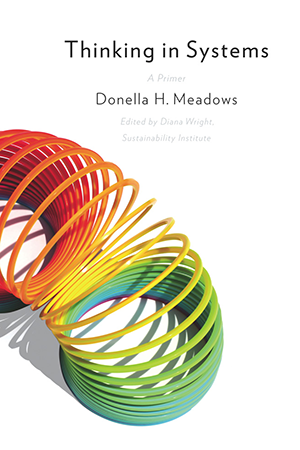
Caleb Scharf
The Ascent of Information
Your information has a life of its own, and it’s using you to get what it wants. One of the most peculiar and possibly unique features of humans is the vast amount of information we carry outside our biological selves. But in our rush to build the infrastructure for the 20 quintillion bits we create every day, we’ve failed to ask exactly why we’re expending ever-increasing amounts of energy, resources, and human effort to maintain all this data. Drawing on deep ideas and frontier thinking in evolutionary biology, computer science, information theory, and astrobiology, Caleb Scharf argues that information is, in a very real sense, alive. All the data we create—all of our emails, tweets, selfies, A.I.-generated text and funny cat videos—amounts to an aggregate lifeform. It has goals and needs. It can control our behavior and influence our well-being. And it’s an organism that has evolved right alongside us. This symbiotic relationship with information offers a startling new lens for looking at the world. Data isn’t just something we produce; it’s the reason we exist. This powerful idea has the potential to upend the way we think about our technology, our role as humans, and the fundamental nature of life. The Ascent of Information offers a humbling vision of a universe built of and for information. Scharf explores how our relationship with data will affect our ongoing evolution as a species. Understanding this relationship will be crucial to preventing our data from becoming more of a burden than an asset, and to preserving the possibility of a human future.
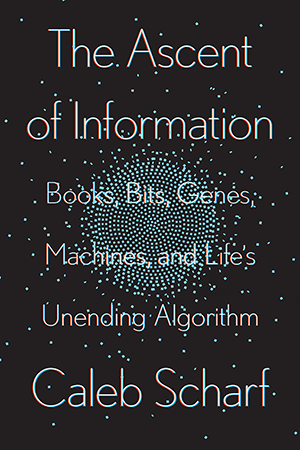
Sandeep Kumar
Swarm Intelligence and Evolutionary Algorithms in Healthcare and Drug Development
Healthcare sector is characterized by difficulty, dynamism and variety. In 21st century, healthcare domain is surrounded by tons of challenges in terms of Disease detection, prevention, high costs, skilled technicians and better infrastructure. In order to handle these challenges, Intelligent Healthcare management technologies are required to play an effective role in improvising patient’s life. Healthcare organizations also need to continuously discover useful and actionable knowledge to gain insight from tons of data for various purposes for saving lives, reducing medical operations errors, enhancing efficiency, reducing costs and making the whole world a healthy world. Applying Swarm Intelligence and Evolutionary Algorithms in Healthcare and Drug Development is essential nowadays. The objective of this book is to highlight various Swarm Intelligence and Evolutionary Algorithms techniques for various medical issues in terms of Cancer Diagnosis, Brain Tumor, Diabetic Retinopathy, Heart disease as well as drug design and development. The book will act as one-stop reference for readers to think and explore Swarm Intelligence and Evolutionary Algorithms seriously for real-time patient diagnosis, as the book provides solutions to various complex diseases found critical for medical practitioners to diagnose in real-world.
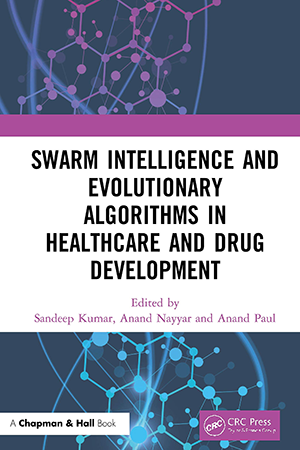
David C. Krakauer
Worlds Hidden in Plain Sight
Over the last three decades, the Santa Fe Institute and its network of researchers have been pursuing a revolution in science.Ignoring the boundaries of disciplines and schools and searching for novel fundamental ideas, theories, and practices, this international community integrates the full range of scientific inquiries that will help us to understand and survive on a complex planet. This volume collects essays from the past thirty years of research, in which contributors explain in clear and accessible language many of the deepest challenges and insights of complexity science.Explore the evolution of complex systems science with chapters from Nobel Laureates Murray Gell-Mann and Kenneth Arrow, as well as numerous pioneering complexity researchers, including John Holland, Brian Arthur, Robert May, Richard Lewontin, Jennifer Dunne, and Geoffrey West.
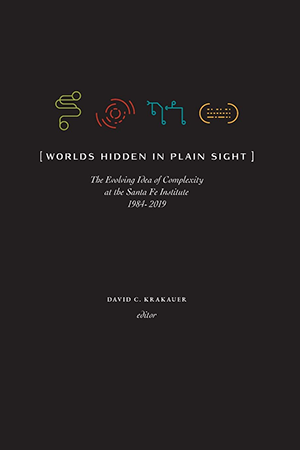
Andrei Borshchev
The Big Book of Simulation Modeling - Multimethod Modeling with AnyLogic
This is a practical guide to building simulation models. It explains how to choose the right constructs of the modeling language to create a representation of a real world system that is suitable for risk-free dynamic experiments. And this is the only book that comprehensively presents all three methods, or paradigms, in simulation modeling: Agent Based, System Dynamics, and Discrete Event. The book is based on the modeling languages supported by AnyLogic, the software that enables a modeler to utilize all three methods and to combine them in a single model. Written by the creator of the software, this book is the most in-depth information resource on AnyLogic and multi-method modeling that currently exists. It covers topics from building simple Agent Based models with state charts, to designing interactive 3D animations, to developing data exchange with external programs. With over 100 hands-on, step-by-step examples with different levels of complexity and various application areas, this book is extremely useful to both simulation professionals and students learning simulation modeling.
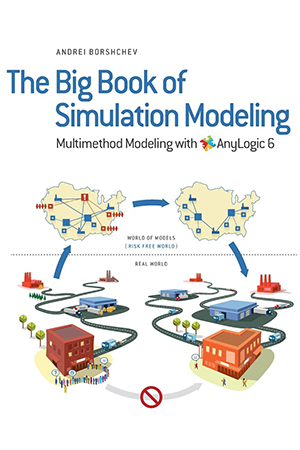
Melanie Mitchell
Complexity
What enables individually simple insects like ants to act with such precision and purpose as a group? How do trillions of neurons produce something as extraordinarily complex as consciousness? In this remarkably clear and companionable book, leading complex systems scientist Melanie Mitchell provides an intimate tour of the sciences of complexity, a broad set of efforts that seek to explain how large-scale complex, organized, and adaptive behavior can emerge from simple interactions among myriad individuals. Based on her work at the Santa Fe Institute and drawing on its interdisciplinary strategies, Mitchell brings clarity to the workings of complexity across a broad range of biological, technological, and social phenomena, seeking out the general principles or laws that apply to all of them. Richly illustrated, Complexity: A Guided Tour--winner of the 2010 Phi Beta Kappa Book Award in Science--offers a wide-ranging overview of the ideas underlying complex systems science, the current research at the forefront of this field, and the prospects for its contribution to solving some of the most important scientific questions of our time.
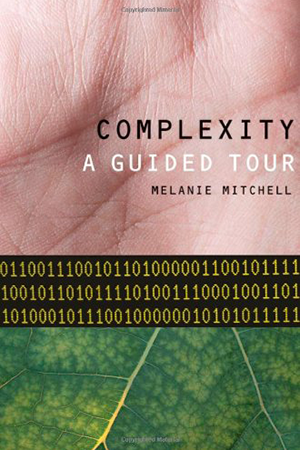
Mitchell M. Waldrop
Complexity
If you liked Chaos, you'll love Complexity. Waldrop creates the most exciting intellectual adventure story of the year. In a rarified world of scientific research, a revolution has been brewing. Its activists are not anarchists, but rather Nobel Laureates in physics and economics and pony-tailed graduates, mathematicians, and computer scientists from all over the world. They have formed an iconoclastic think-tank and their radical idea is to create a new science: complexity. They want to know how a primordial soup of simple molecules managed to turn itself into the first living cell—and what the origin of life some four billion years ago can tell us about the process of technological innovation today. This book is their story—the story of how they have tried to forge what they like to call the science of the twenty-first century. "Lucidly shows physicists, biologists, computer scientists and economists swapping metaphors and reveling in the sense that epochal discoveries are just around the corner.
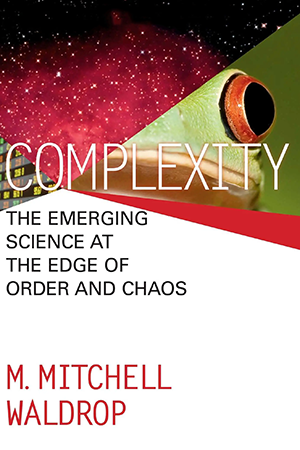
Chris Kempes
The Energetics of Computing in Life and Machines
Zoom in on a digital computer, and you’ll see electrons moving in extraordinarily complicated, time-varying patterns. Those patterns of electrons are the physical form of the logical patterns of 1s and 0s that represent information in binary code; the dynamics of those patterns is the physical form of the information processing performed by the computer as it runs an algorithm. It requires energy to move these electrons around according to those patterns — and using that energy to move all those electrons produces waste heat, so much so that about 5% of all US and European energy consumption currently goes to the generation of heat by running computers. Despite the huge monetary and environmental cost of digital computation, experts still only have a vague understanding of how the heat produced by a computer depends on the dynamics of the patterns of 1s and 0s within the computer. However, recent breakthroughs in nonequilibrium statistical physics hold the promise of revolutionizing our understanding of the heat produced by information processing — whether it be processing the patterns of 1s and 0s in digital computers, or the analog information processed inside biological computers, such as living cells and human brains. What are the fundamental equations relating the amount of energy required to run a computation to the details of that computation? How — and what — do biological systems compute? How could we automatically reduce the energy consumption of software? Written by and for scientists working across disciplines that include computer science, physics, cellular biology, and neurobiology, the book provides “a snapshot of the current state of the field,” where, according to Wolpert, “these ideas are starting to explode, in all directions.” By presenting what is now known, and unknown, about the relationship between energetics and the microscopic processes that occur during computation, the editors hope to entice a new generation of scientists to work on questions that could have far-reaching consequences for how we understand all of our computers, be they conventional, digital computers, or biological computers. On a purely practical level, this research could lead to cooler-running, more powerful digital machines, like exascale computers and even tiny swarm robots. It could also impact the sustainability of computing technology — for instance, can biological systems serve as inspiration for designing computers with minimal thermodynamic cost?
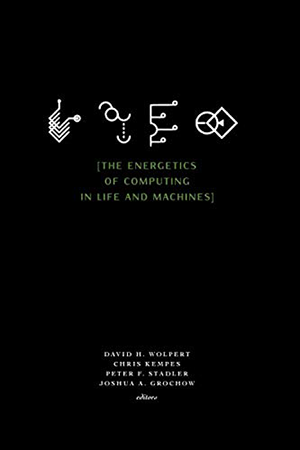
Ilya Grigoryev
AnyLogic 7 in Three Days
The first practical textbook on AnyLogic 7 from AnyLogic developers. AnyLogic is the unique simulation software that supports three simulation modeling methods: system dynamics, discrete event, and agent based modeling and allows you to create multi-method models. The book is structured around four examples: a model of a consumer market, an epidemic model, a job shop model and an airport model. We also give some theory on different modeling methods. You can consider this book as your first guide in studying AnyLogic 7.

Allen Downey
Think Complexity
Complexity Science is an interdisciplinary field—at the intersection of mathematics, computer science, and natural science—that focuses on discrete models of physical and social systems. In particular, it focuses on complex systems, which are systems with many interacting components. Complex systems include networks and graphs, cellular automatons, agent-based models and swarms, fractals and self-organizing systems, chaotic systems and cybernetic systems. This book is primarily about complexity science, but studying complexity science gives you a chance to explore topics and ideas you might not encounter otherwise, practice programming in Python, and learn about data structures and algorithms. This book picks up where Think Python leaves off. I assume that you have read that book or have equivalent knowledge of Python. As always, I try to emphasize fundamental ideas that apply to programming in many languages, but along the way you will learn useful features that are specific to Python. The models and results in this book raise a number of questions relevant to the philosophy of science, including the nature of scientific laws, theory choice, realism and instrumentalism, holism and reductionism, and Bayesian epistemology.
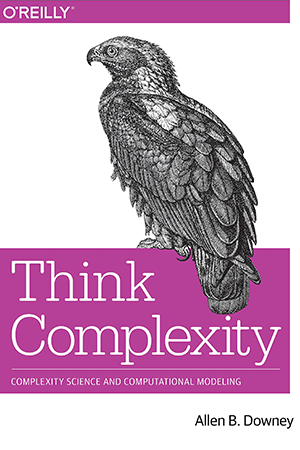
Klaus Mainzer
Thinking in Complexity
Since the first edition sold out in less than a year, we now present the revised second edition of Mainzer's popular book. The theory of nonlinear complex systems has become a successful problem-solving approach in the natural sciences from laser physics, quantum chaos, and meteorology to computer simulations of cell growth in biology. It is now recognized that many of our social, ecological, and political problems are also of a global, complex, and nonlinear nature. And one of the most exciting contemporary topics is the idea that even the human mind is governed largely by the nonlinear dynamics of complex systems. In this wide-ranging but concise treatment, Prof. Mainzer discusses, in a nontechnical language, the common framework behind these endeavors. Emphasis is given to the evolution of new structures in natural and cultural systems and we see clearly how the new integrative approach can give insights not available from traditional reductionistic methods.
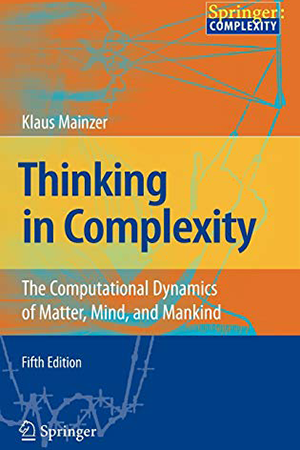
Stephen H. Kellert
In the Wake of Chaos
Chaos theory has captured scientific and popular attention. What began as the discovery of randomness in simple physical systems has become a widespread fascination with chaotic models of everything from business cycles to brainwaves to heart attacks. But what exactly does this explosion of new research into chaotic phenomena mean for our understanding of the world? In this timely book, Stephen Kellert takes the first sustained look at the broad intellectual and philosophical questions raised by recent advances in chaos theory—its implications for science as a source of knowledge and for the very meaning of that knowledge itself.
